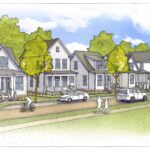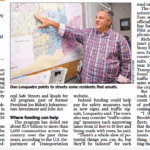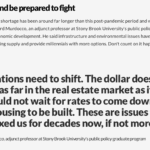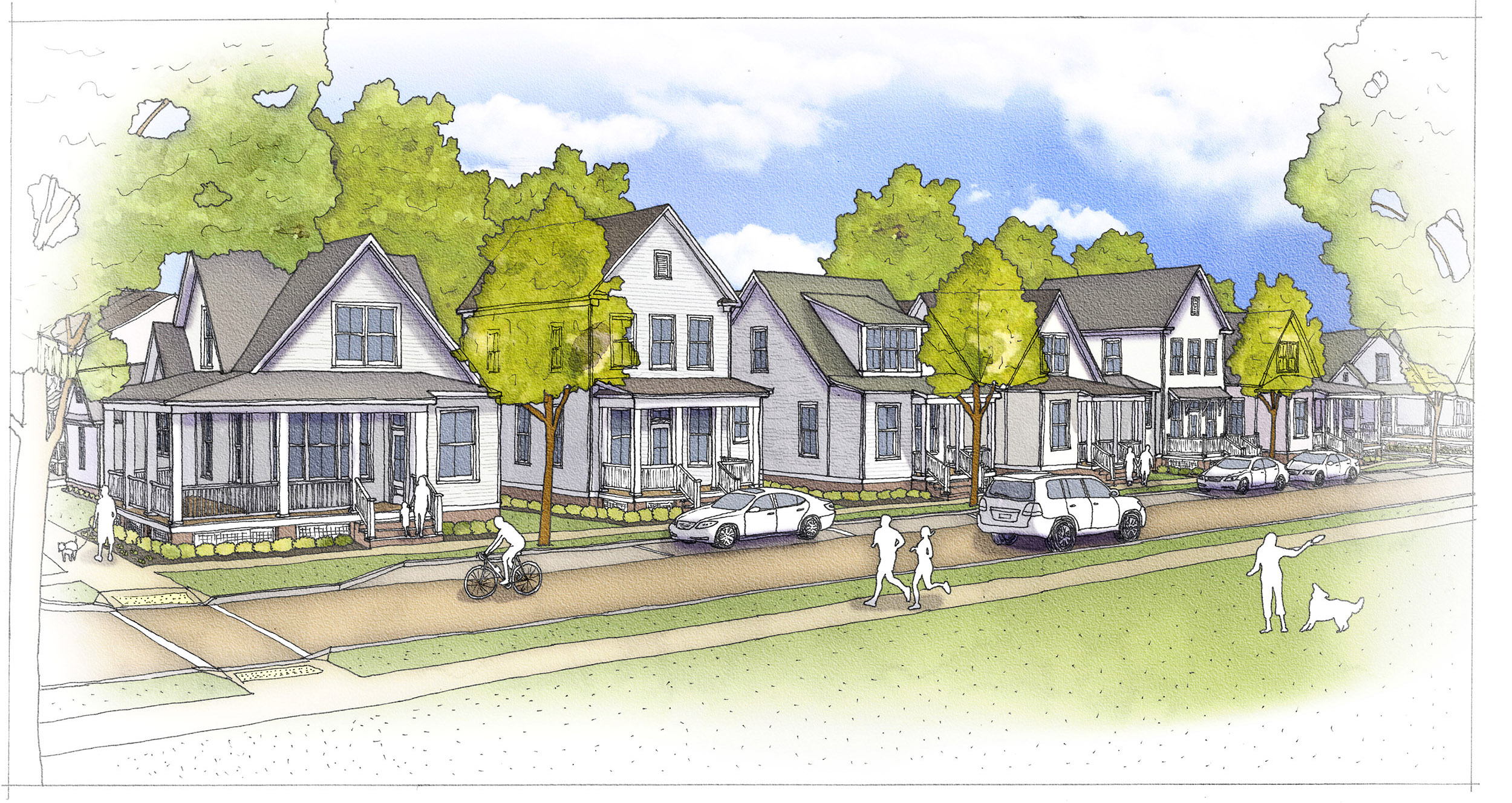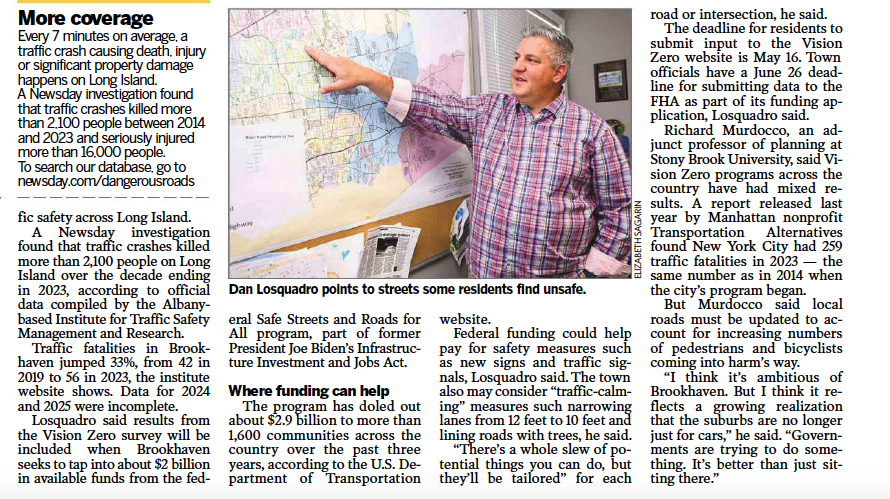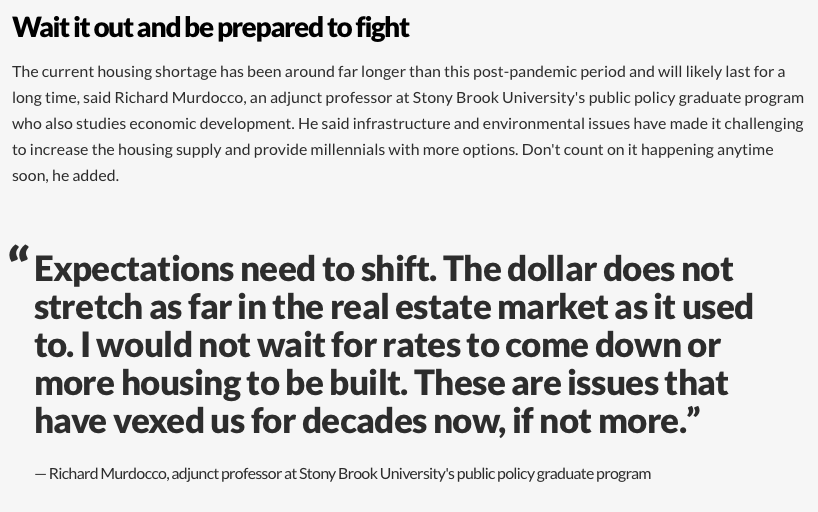Excerpt from:
PRINCIPLES FOR NEW SUBURBIA by Tullio Bertoli
A Meditative Manual for Sustainable Humanistic Planning
“We do not inherit the earth from our ancestors; we borrow it from our children.”
(Native American Proverb)
OUR PLANNING MUST BE BORN out of an analytic process that understands what constitutes our basic necessities. Society has varying needs – environmental, pragmatic, social and economic – and we plan our environments to serve and to accommodate those requirements. In order to accomplish this difficult task, it is incumbent upon all of us to familiarize ourselves with how communities perform and operate within the context of a larger world.
We can subsequently make quantitative and qualitative judgments that will assist us in our efforts. The foremost responsibility for planners should be to create environments that are intended for people, not automobiles, as we have done with our past planning efforts. To this end, we must assert the notion that human needs are primary over all others.
A sustainable humanistic planning approach concerns itself with people above all, but it especially values them within the context of shared community values. As steady observers of human connections and our individual dependencies, planners should be led by an ongoing assertion and respect for the common principles and wishes of these communities and of their members. To be successful, the New Suburbia must recognize and accept the common thread connecting us all together: our very humanity.
As primary concepts for the New Suburbia, sustainability and humanism should be viewed as both accessible independently and also complementary to each other in their contextual characteristics. Humanism is a term generally applied to a predominant philosophy which affirms that human beings have the right and responsibility to assemble a more sympathetic society. This can be accomplished by giving significance and shape to our own lives, as well as asserting our individual independence and personal expression.
As an example, humanist architecture utilizes the human figure, such as Le Corbusier’s Modulor Man, as a proportioning device for various design elements. In this way, the building has properties that make it more adaptable to our physical needs. On the other hand, sustainability is the general belief that we, as individuals and as a common collective group, have the inherent capacity and the moral responsibility for assuring the protection and maintenance of the natural resources in our environment that are so essential to survival. Sustainability looks for solutions that assure that we have, and will continue to have, materials and resources to protect the human well being and the connection to the environment.
As practicing philosophies, both humanism and sustainability are critical as they together are able to create and maintain the conditions under which we as humans and nature can co-exist in harmony with each other. Furthermore, the ability for us to realize the goals of each philosophy permits the ultimate satisfaction of the social, economic, financial and other requirements of present and future generations.
It would be useful if we evaluate these two similar philosophies individually in order to have a clearer perception of their full potential. Humanist planning takes a different approach from current planning theory to designing our built forms. As we have articulated elsewhere, Euclidean zoning developed out of a time and era when functionalism in planning determined how our built environment was shaped. That theory believed that a collection of uses could be accommodated and treated as separately optimize elements including home, work, recreation, and the transportation systems that serve them. Furthermore, functionalism and Euclidean zoning theory believed that these uses should not be integrated so that activities could proceed “efficiently” with little or no interference from each other.
Humanist planning is different in that it seeks to enhance the many existing public structures by re-engaging us and re-establishing the connective but disparate uses of our environment. The foremost concern of humanist planning is the human experience of an individual within his or her environment. As such, decisions are made based upon an individual’s needs, desires and circumstances rather than on overall planning concepts which may be disconnected from any basis in reality.
The humanist planner pays particular attention to the smaller scale elements and their particular ordering systems associated with them, thereby avoiding any obsession with large scale elements or broad sweeping planning philosophies based upon some form of social engineering. These planners further believe in an incremental growth process as a product of flexible zoning codes used to implement their projects.
The humanist planning approach is also different from the current method that created suburban sprawl. Rather than focusing as Euclidean zoning does on the macrocosm scale and its required transport connections, humanist planning operates at the microcosm level with an emphasis on the small-scale elements that have such a profound impact on our day-to-day experiences. Humanist planners will advocate and support a rich textured mixed-use environment like South Street Seaport in New York or Faneuil Hall Marketplace in Boston. There, activities and multiple uses overlap as they are interwoven into the fabric of what urbanist writer Jane Jacobs would call “organized complexity” or similarly what architect Robert Venturi calls the “complexity and contradiction” of our modern lives.
To better understand the distinction between the two planning models, we must recognize that humanist planners are not concerned about making streets just for automobiles but also making streets as livable places for people. For example, they want to assure that the vital relationship between the house and the street survives in a manner that allows children to play, parents to converse, or neighbors to confer about the day’s events. For humanist planners, streets are places where the pavement can become a stage set for the theater of neighborhood life rather than only providing an easier, faster channel for circulating our automobile traffic.
Humanist planners expect and demand that the inhabitants of our society can shape their environment as they assert it with their own identity. They believe that citizens should identify and therefore help conceive the kind of community that they want to create and experience. Humanist planners advocate incremental changes patterned on our existing neighborhoods, hamlets and villages rather than on new all embracing concepts. They believe that traditional town planning, as practiced before the advent of suburbia, was a sourcebook of elements that were thrown out or ignored by suburbia and its many practitioners. They want to recover those sources and implement them once again.
Like humanist planning, a more sustainable approach to our environment requires the acceptance of a number of qualities in addition to the protection and maintenance of our natural resources. Sustainability asks us, collectively as a society, to accept the concept of “stewardship” over our environment. This recognition allows and permits us a level of personal ownership, and therefore responsibility, for planning and designing with nature’s intent. It therefore deepens our conviction to ourselves and to our environment.
The concept of stewardship demands that we keep our biological systems – our fragile wetlands, precious rivers and our natural forests – diverseand productive. This requirement is a necessary condition for the future well-being of all humans and organismsexisting in nature. Stewardship also requires that we manage the human impact upon our vital resources and our delicate ecosystem processes, through an effective environmental management program as well as the economic management of consumption of resources. Both of these elements must be jointly accepted as our personal commitment in order to fulfill the personal goal of stewardship.
For a development project to be considered sustainable, it must generally possess a series of common characteristics. First, sustainable projects are built using construction methods, building systems and materials that will not deplete resources or harm their natural life cycles. They also are designed to incorporate a site’s natural land forms, water, ecology, plant life and energy resources as integral aspects of the development.
Sustainable development must further integrate natural systems with our human patterns as it celebrates continuity, uniqueness and place-making. Sustainable developments are those which fulfill our present and future needs while using and not harming renewable resources and the unique human environmental systems of a site: air, water, land, energy, ecology, etc.
So the combined philosophies of humanism and sustainability together allow us to better mesh the many disparate parts and materials of our fragmented environment into a complex unity. Since both these philosophies embrace the notions of stewardship and responsibility, they view the basic desire of human beings to act in ways that support and preserve life as fundamental for themselves, other species, and future generations. This mandates that planners design intelligently by making wise and efficient use of energy, water, and resources in our design as a worthwhile goal to accomplish.


